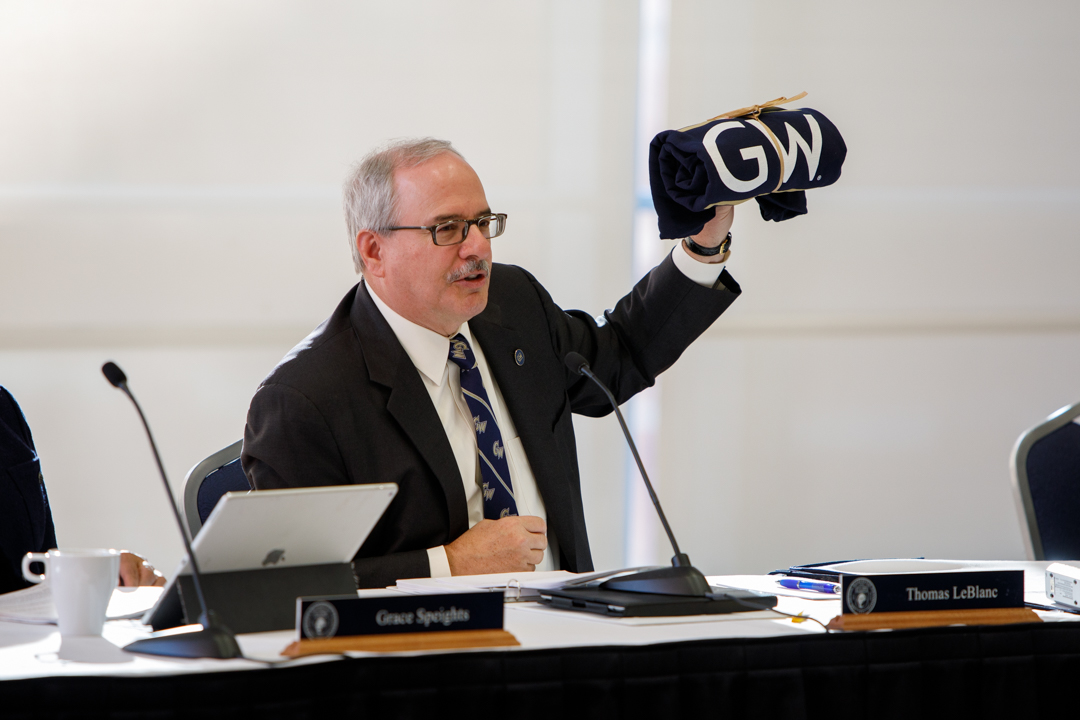The George Washington University Board of Trustees voted Friday to continue to contain the cost of attendance, guaranteeing no tuition increase for returning undergraduate students and limiting increases for incoming undergraduate students to approximately 3 percent for the 2019-20 academic year.
Also, beginning fall 2019, the undergraduate tuition rate will cover up to 18 credit hours per semester—up from the current 17-credit cap—in response to student feedback. The extra credit hour applies to both incoming and returning undergraduate students.
“We have appreciated students’ feedback in advocating for this academic priority and believe this change will further enhance the student experience,” President Thomas LeBlanc said.
The undergraduate cost of attendance continues to include a dining plan based on students’ residence hall assignments. Living assignments without an in-unit kitchen include a $4,750 dining plan—an increase of $150 for first-year students—while those with an in-unit kitchen include a $3,050 dining plan. The approach was implemented this fall to improve the student experience after some students and parents expressed concern that previous dining plans did not provide sufficient funds to last the entire academic year. It aims to more directly link students’ needs for dining funds by taking into account living arrangements as well as help families plan for educational expenses. It also increases transparency in the university’s cost of attendance.
Although new tuition rates have traditionally been approved during the board’s February meeting immediately preceding the fall semester in which the new rates will apply, beginning with this year the board will now approve rates in the preceding October. This change will give prospective students and their families tuition rates and financial aid information earlier in their process of deciding whether GW is the right fit.
Tuition for incoming undergraduate students in fall 2019 will be locked in at $56,845 annually for up to five years, as long as they remain in good academic standing. Underscoring the university’s commitment to containing costs, the percent increase compared to last year is 3.1 percent for tuition and fees and also about 3.1 percent for the total cost of attendance (tuition, fees, room and board), depending on a student’s housing selection and dining plan.
The board also approved 2019-20 graduate tuition rates, which vary by program and will be posted online in the coming months.


